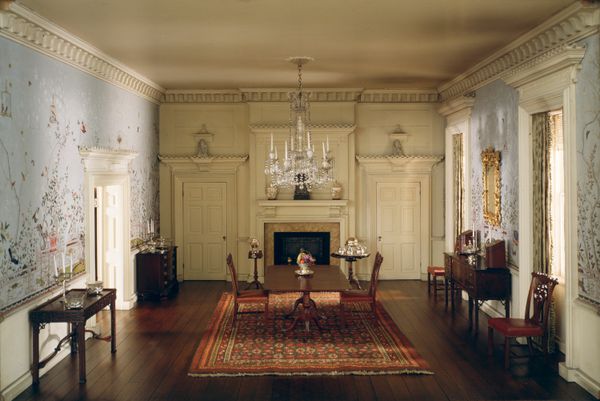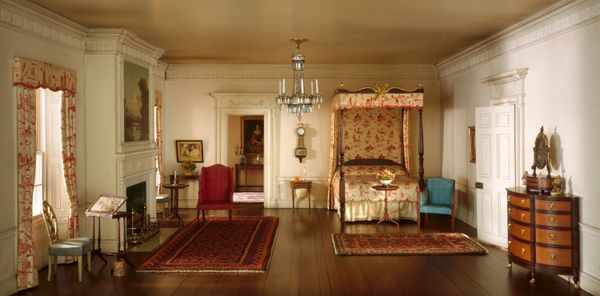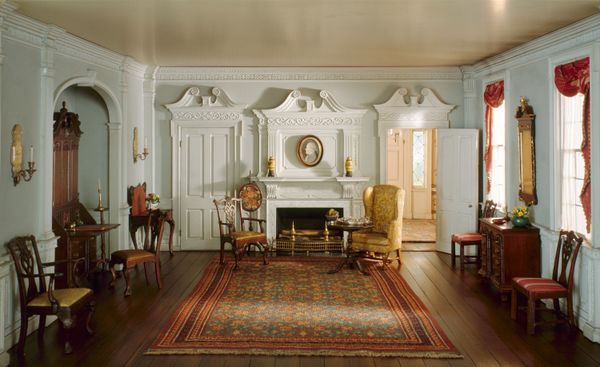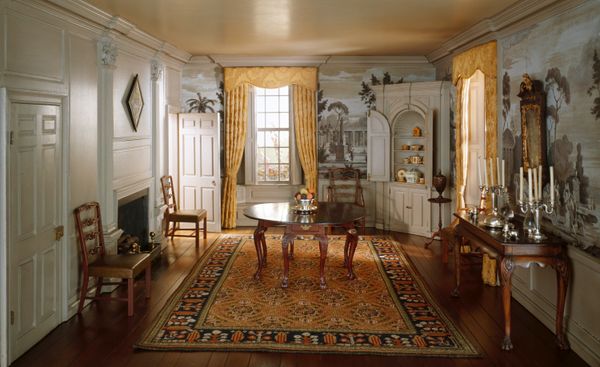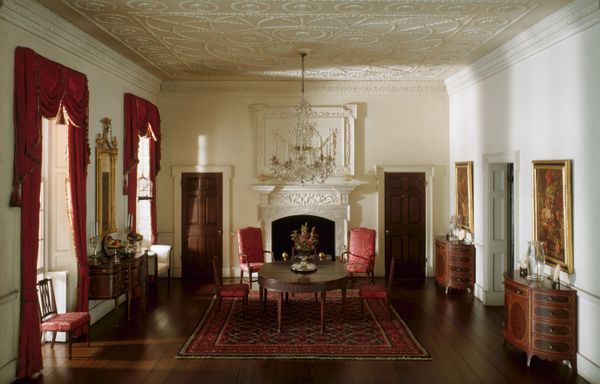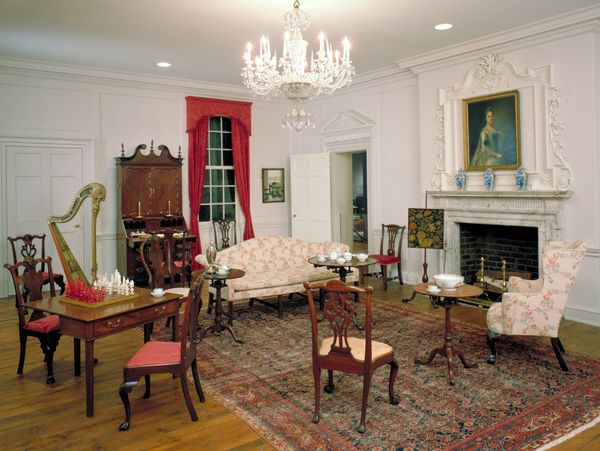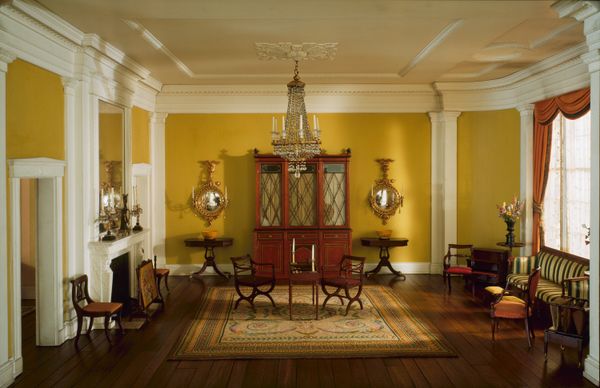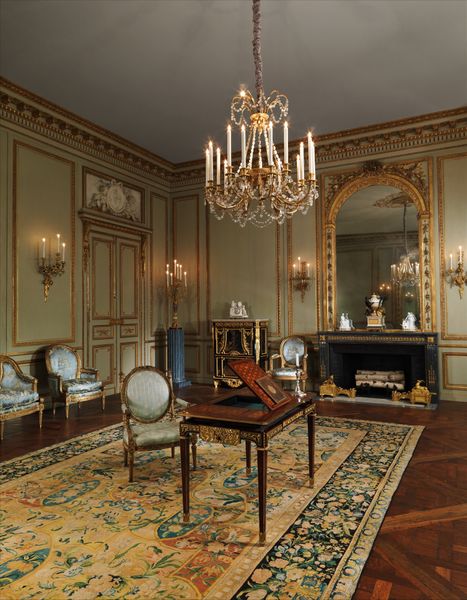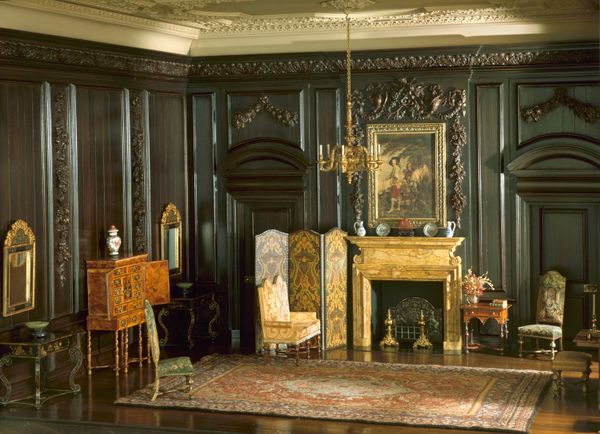
A28: South Carolina Drawing Room, 1775-1800 c. 1940
0:00
0:00
Dimensions: Interior: 12 1/4 × 22 1/4 × 21 1/2 in. Scale: 1 inch = 1 foot
Copyright: Public Domain
Curator: Looking at this photograph, I'm immediately struck by the scene's stillness. It’s all so meticulously arranged, almost unnaturally pristine. What do you make of this interior space? Editor: What we have here is a photograph titled “A28: South Carolina Drawing Room, 1775-1800," one of Narcissa Niblack Thorne’s exquisite series of miniature rooms, and was made around 1940. Curator: "Miniature" is key. Knowing its true scale alters my perception completely. It becomes a study in microcosm, a constructed reality, if you will. I’m interested in the perfect symmetry and balance - the matching doorways, the careful placement of each object…it speaks of order and control. Editor: The Thorne Rooms are fascinating cultural documents. Wealthy benefactors and the museum community considered these period rooms useful tools in shaping a shared cultural memory, celebrating Americana in ways that promoted education, but also a distinct social vision of national history. The prominence of neoclassicism and accurate presentation in this room reflect this goal, don't you agree? Curator: Precisely. And look at the restrained palette – the creams, blues, and browns. Nothing clashes, nothing jars. Each element complements the others in a harmonious, almost musical way. I also notice how the furniture adheres to the golden ratio when composed inside of this frame; it brings an odd, pleasing feeling. Editor: It's worth mentioning the political context too. While celebrating American heritage, such depictions often glossed over or excluded the realities of slavery and social inequality that shaped life during that period, especially in a Southern state like South Carolina. It evokes complex emotions, knowing that the wealth to cultivate such refined aesthetics would often arise on an enslaved labor force. Curator: Absolutely, a painting always conceals, and this scene hides as much, if not more, than it reveals through its meticulous arrangement of neoclassical aesthetics. This image truly asks to interrogate our visual culture through all layers of socio-historical interpretation and its material reality. Editor: Indeed, examining it reminds us that what is deemed "beautiful" is often interwoven with social and historical forces we must untangle. Curator: And even a photograph can provide fertile ground for this kind of analysis. It shifts our perspective of form and history, after all.
Comments
No comments
Be the first to comment and join the conversation on the ultimate creative platform.
